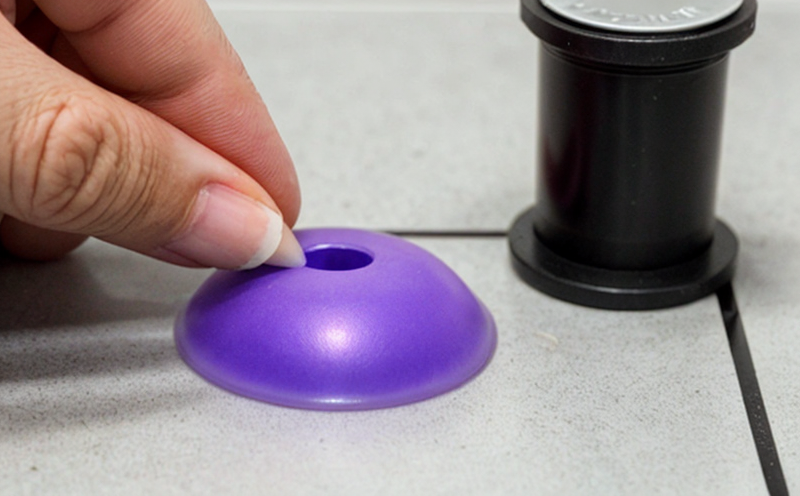DIN EN 725 Surface Area of Advanced Technical Ceramics
The DIN EN 725 standard is a pivotal document in the field of materials science and nanotechnology, particularly for advanced technical ceramics. This standard provides a method to determine the specific surface area of these materials using gas adsorption techniques. The focus on surface area is crucial because it significantly impacts the properties and performance of advanced technical ceramics in various applications.
The process outlined in DIN EN 725 involves measuring the amount of gas (most commonly nitrogen) that can be adsorbed onto a solid material at low temperatures, typically around 77 Kelvin. The surface area is then calculated based on the pressure at which the gas begins to adsorb, known as the monolayer point. This method ensures precise and repeatable results, making it essential for quality control and research in advanced technical ceramics.
Advanced technical ceramics are used in a wide range of industries due to their exceptional mechanical properties, thermal stability, chemical resistance, and wear resistance. These properties make them ideal for applications such as aerospace, automotive, electronics, and medical devices. The surface area plays a critical role in determining the reactivity and compatibility of these materials with other components or environments.
The testing process begins with careful preparation of the ceramic sample to ensure it is free from contamination that could skew results. The sample must be ground into a fine powder if necessary, ensuring uniformity across all samples being tested. Once prepared, the sample is loaded into an adsorption analyzer, which then exposes the sample to a controlled environment where gas adsorption measurements are made.
The DIN EN 725 method allows for the determination of both total and specific surface areas. The total surface area refers to the sum of all internal and external surfaces, while the specific surface area focuses on the external surface available for interaction with the surrounding medium. These values are critical in understanding how a material will behave in its intended application.
The results from DIN EN 725 testing can be used to optimize manufacturing processes, enhance product performance, and ensure compliance with regulatory standards. For instance, in aerospace applications, knowing the surface area helps engineers design components that can withstand extreme temperatures without compromising their integrity. In medical devices, it ensures compatibility with biological systems.
The precision of DIN EN 725 testing is enhanced by using state-of-the-art equipment and adhering strictly to standardized procedures. This ensures accurate and reliable results that are crucial for maintaining high-quality standards in the production of advanced technical ceramics.
Benefits
The implementation of DIN EN 725 surface area testing brings numerous benefits, particularly for industries reliant on advanced technical ceramics. These benefits include:
- Enhanced Quality Control: Accurate measurement ensures that products meet the required specifications and standards.
- Improved Product Performance: Understanding surface area helps in optimizing material properties for better performance in various applications.
- Innovation Facilitation: By providing detailed data on surface characteristics, DIN EN 725 supports ongoing research and development efforts.
- Regulatory Compliance: Ensures that products are manufactured according to international standards, enhancing market access.
- Precise Manufacturing: Accurate measurements help in fine-tuning manufacturing processes for consistent product quality.
- Cost Efficiency: By identifying potential issues early in the production process, costly rework and scrap are minimized.
- Better Product Design: Detailed surface area data can lead to more efficient and effective design choices.
- Sustainability: Optimizing material use through precise testing leads to reduced waste and resource consumption.
Quality and Reliability Assurance
The reliability of DIN EN 725 results is paramount for ensuring the quality of advanced technical ceramics. The standard ensures that all measurements are conducted under controlled conditions, minimizing variables that could affect accuracy. Regular calibration of equipment and adherence to strict procedures guarantee consistent and repeatable results.
Quality assurance in this context involves not only the testing process itself but also the preparation of samples. Proper sample handling is crucial as it directly impacts the outcome of the test. Samples must be representative of the material being tested, free from contaminants, and prepared according to specified protocols.
The reliability of the results can be further enhanced through inter-laboratory comparisons, where multiple laboratories conduct tests on the same sample under standardized conditions. This ensures that all labs produce consistent results, adding credibility to the testing process.
Quality control measures also include regular audits and inspections to ensure that all steps in the testing process are followed correctly. These checks help identify any deviations from standard procedures early, allowing for corrective actions to be taken promptly.
The importance of quality and reliability assurance cannot be overstated, especially when dealing with advanced technical ceramics used in critical applications. The precision provided by DIN EN 725 ensures that products meet the highest standards of performance and safety, contributing significantly to the overall integrity of manufacturing processes.
Environmental and Sustainability Contributions
The environmental impact of nanomaterials testing is minimized through the use of efficient instrumentation and careful sample preparation. DIN EN 725, as a standardized method, ensures that all tests are conducted in a manner that reduces waste and energy consumption.
Sustainable practices in nanomaterials testing include the recycling of used samples and gases to reduce environmental footprint. By optimizing test procedures and minimizing material use, laboratories can significantly contribute to sustainability efforts.
The results from DIN EN 725 testing are not only beneficial for immediate product quality but also have long-term implications for environmental conservation. For instance, by ensuring that advanced technical ceramics perform optimally in their intended applications, there is reduced need for replacement and disposal of materials, thereby minimizing waste.
Additionally, the standard encourages the use of renewable resources where possible, further enhancing sustainability. By adhering to these practices, laboratories can play a crucial role in promoting environmental stewardship within the industry.





